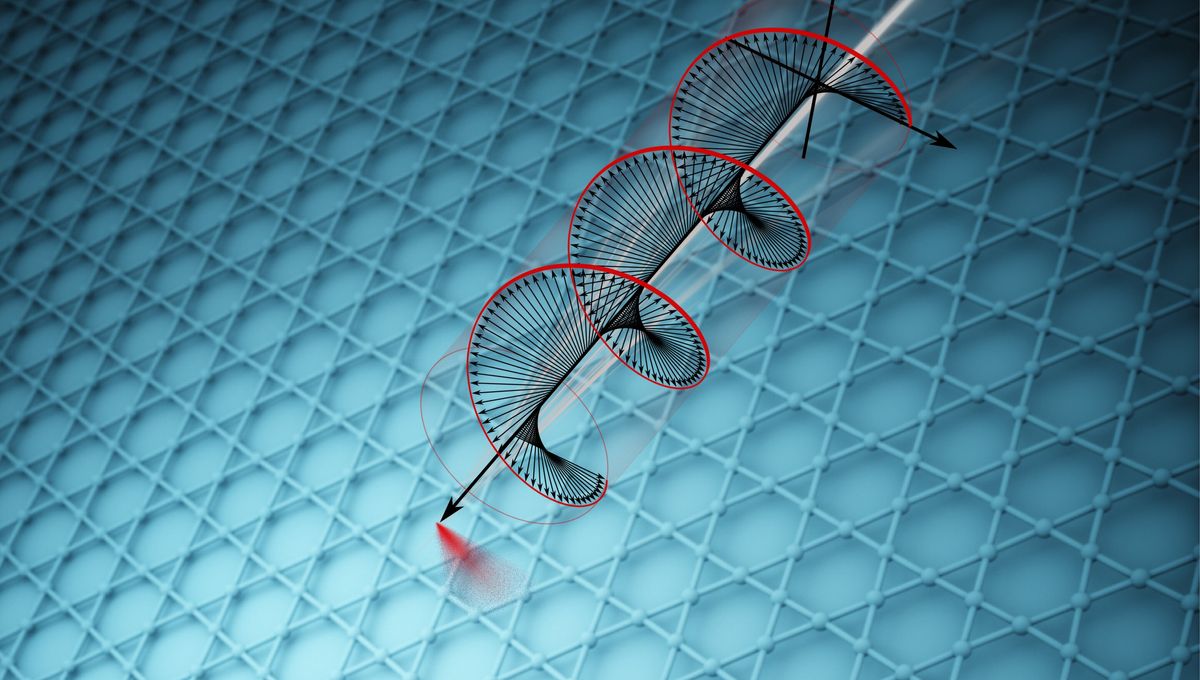
Symmetry is very important in nature, as it underlies conservation laws. So, when symmetry is broken, there is always something exciting to be found. Researchers have now employed a new microscopy technique to study how symmetry breaks in a special material that was not previously known to have such properties.
This particular symmetry break is known as chirality, which is often understood in terms of handedness. This means that a chiral object looks different from its mirror image; just like you couldn’t swap your left and your right hand, chiral objects (from molecules to snail shells and more) also can’t be swapped.
The team behind the new study has been working with a material made of potassium, vanadium, and antimony (KV₃Sb₅), which is organized as a Kagome lattice. This material is not chiral, but it has been suspected that it is possible to create a chiral quantum state if a charge density wave passes through it. And indeed they found that effect.
“Our measurements directly pinpoint broken inversion and mirror symmetries and shed light on the topological nature of this quantum material that exhibits charge order,” co-lead author and graduate student Zi-Jia Cheng, from Princeton University, said in a statement. “This conclusively establishes the intrinsic chiral nature of the charge-ordered state in a topological material for the first time.”
It is exciting that they found this, but researchers have no idea what actually causes this chirality.
“We confirmed the phenomenon, but we don’t yet have a rigorous theory as to why it occurs,” team leader Professor M. Zahid Hasan added. “We still don’t fully understand it.”
As the team works out its origin, they are also thinking about potential applications, like quantum sensors based on magnetism and light.
“It’s surprising that an emergent chiral state can generate such a pronounced response that was never reported before,” Hasan said. “This work also shows that second-order electromagnetic measurements are a powerful tool for detecting subtle symmetry breakings in topological materials.”
The team had found some circumstantial evidence of the formation of chirality in this material back in 2021. But there was a need for a better microscope to actually study the material and its properties in detail. This time around they used a scanning photocurrent microscope (SPCM), which they compared to JWST, but for the quantum world.
“We’re finally able to resolve subtle quantum effects that had remained hidden in a topological quantum material,” said Hasan. “This is just the beginning. With these sensitive tools, who knows what hidden worlds of topological quantum matter we’ll uncover next.”
The world we inhabit is asymmetrical, so understanding how symmetries are broken is key to how reality as we experience it arises. It might also be useful in exciting concepts such as superconductivity, with various tech applications.
The study is published in Nature Communications.
Source Link: Peculiar Material Revealed To Have Hidden Quantum State That Can’t Be Flipped In A Mirror